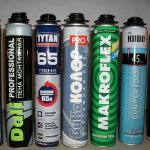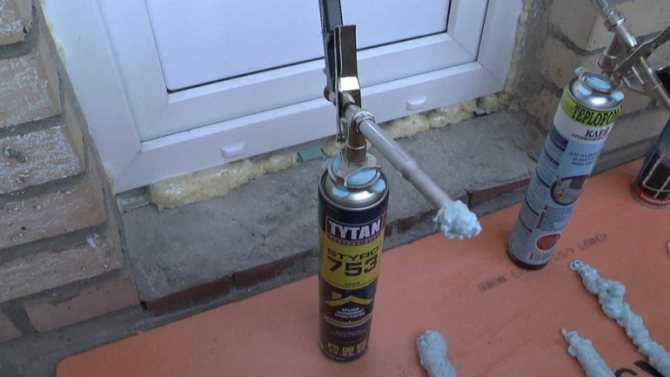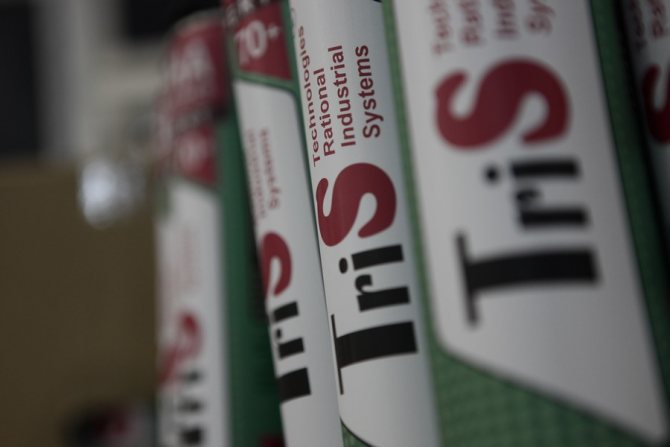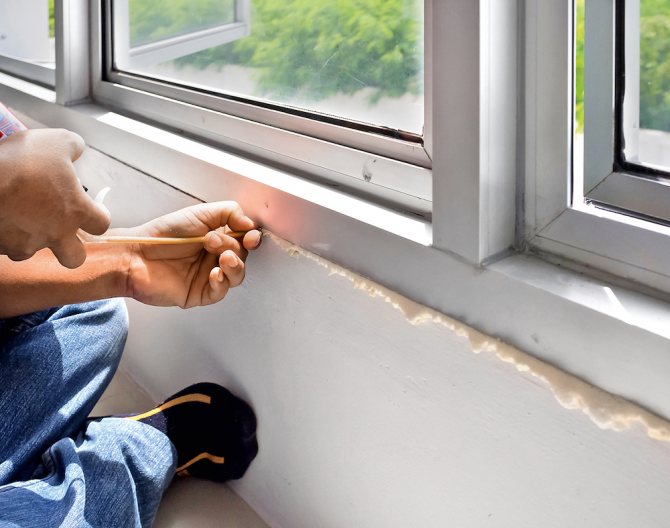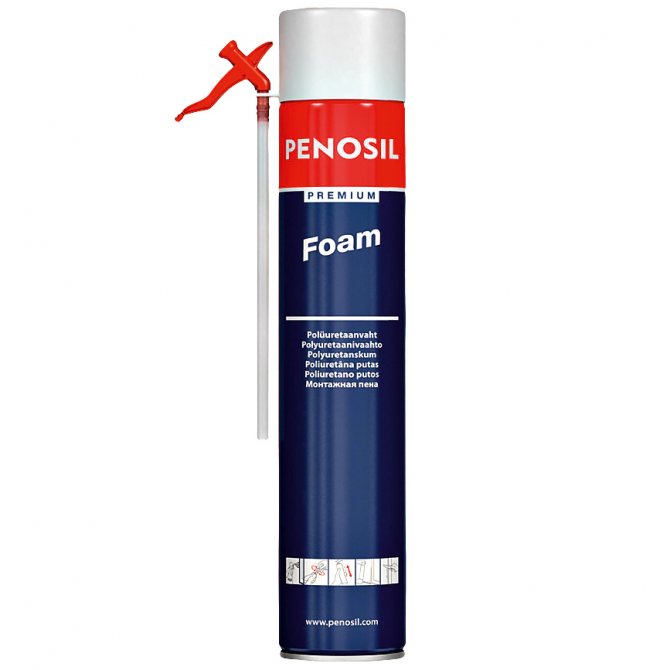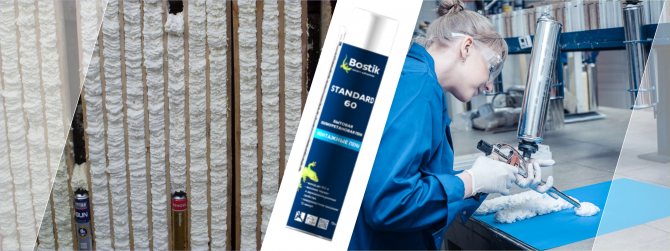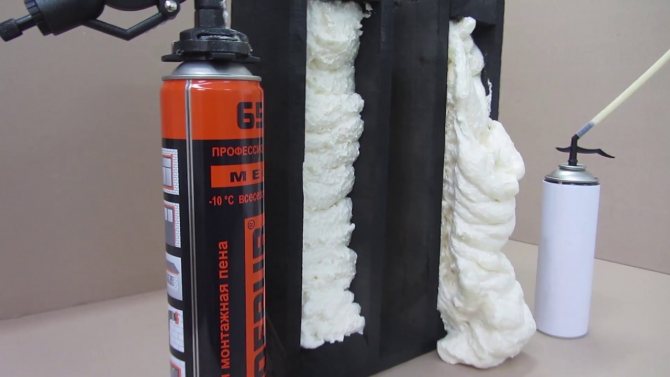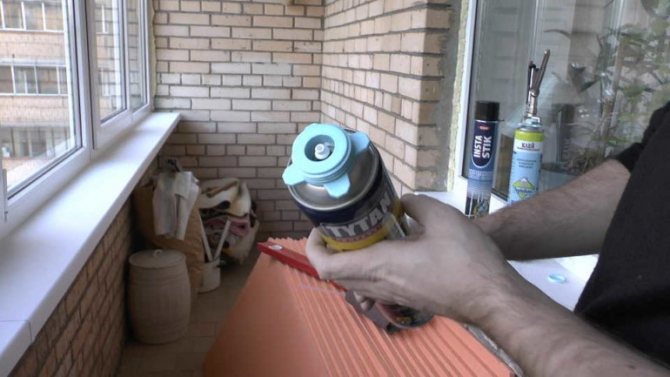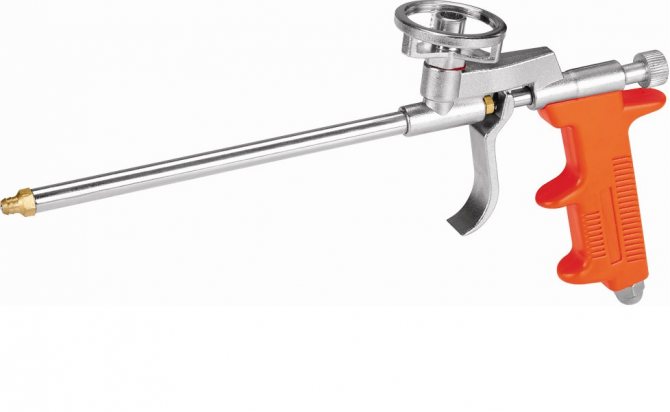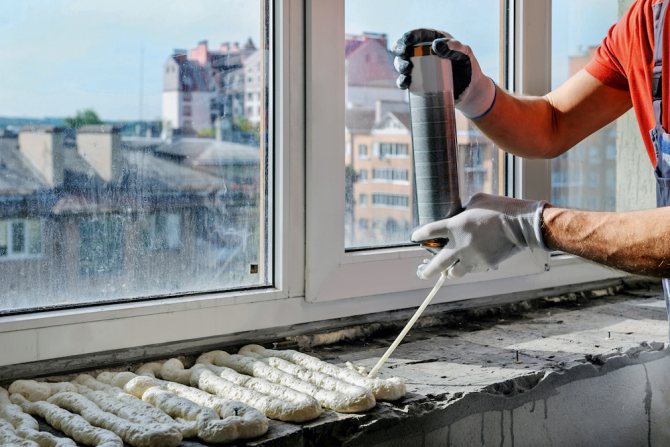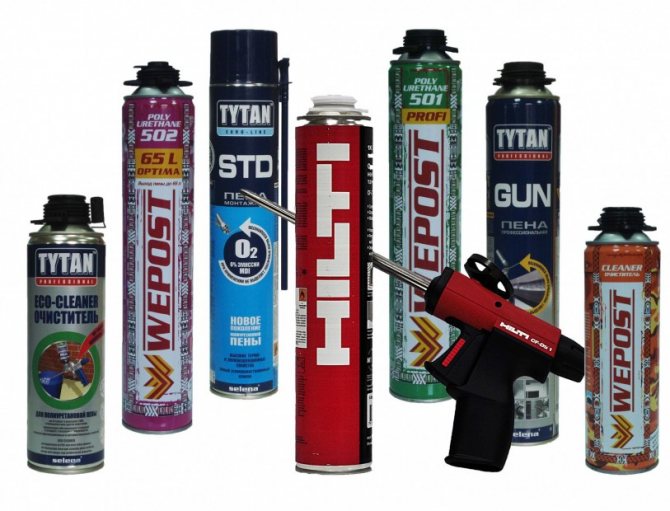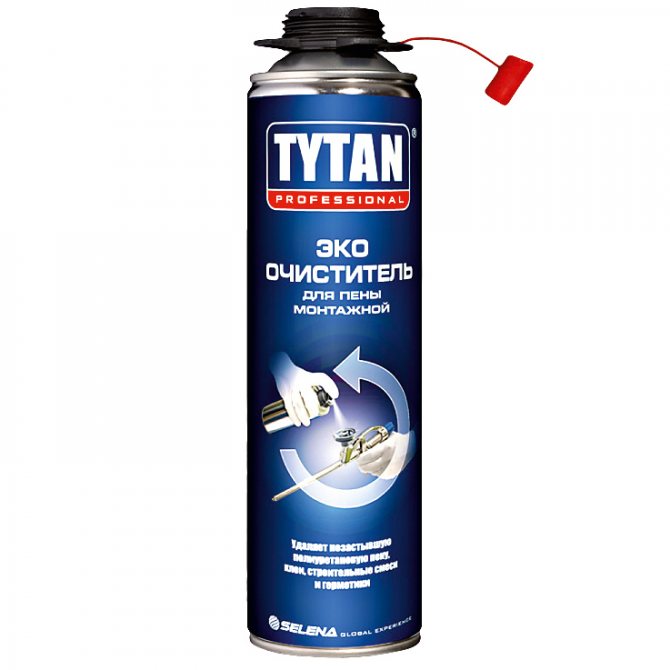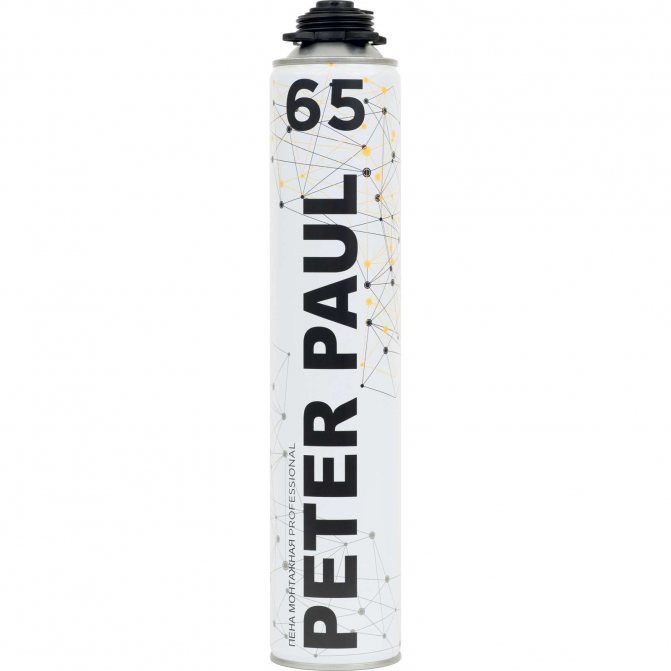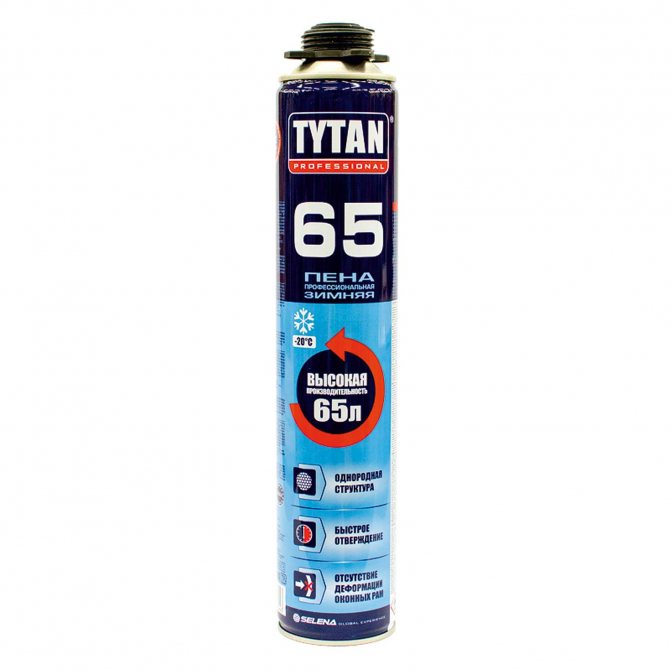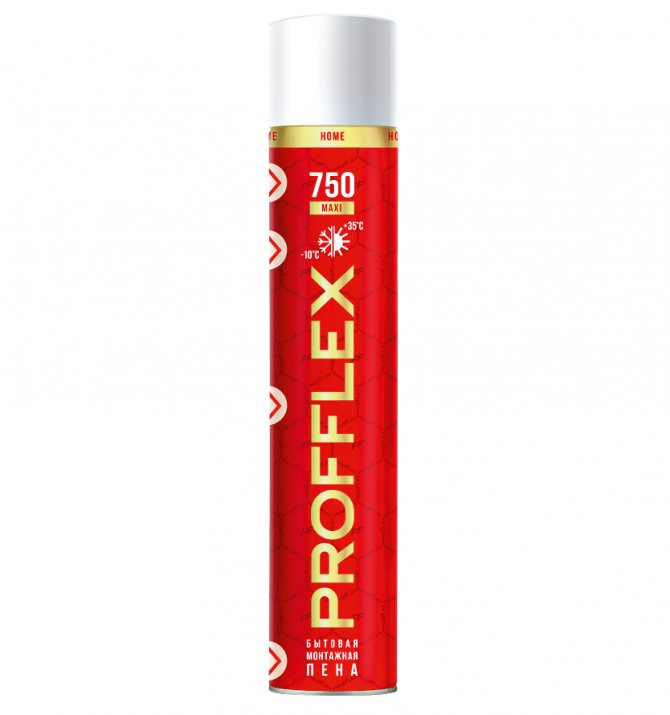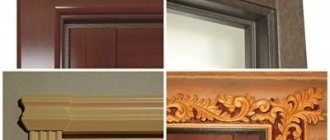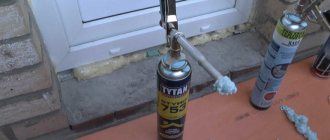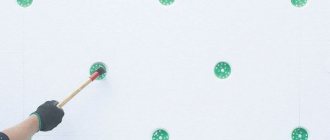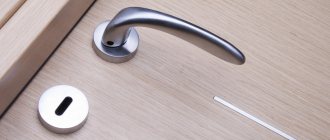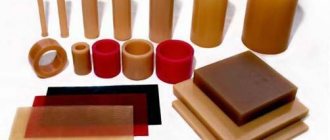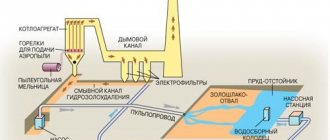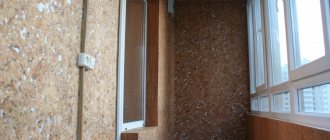I am glad to welcome readers! I want to tell you about a story that happens to everyone who installs windows or doors on their own. You will probably need polyurethane foam, and you will succumb to the desire to save money. So it happened to me: I made slopes on plastic windows and faced the fact that the spray cans quickly empty. I had to figure out the differences between polyurethane foams in different price categories and think about whether to spend money on a gun. Let's consider together whether it is worth buying adapter cylinders (with a tube) or switching to the Pro version.
Which polyurethane foam to buy: regular or professional? The latter option actually saves money!
Types and properties of polyurethane foam
The basic characteristics include:
- High adhesive performance. The substance forms a strong bond with basic materials used in construction. But the foam sticks to oiled, silicone bases, polyethylene much worse.
- When leaving the container, the sealant increases fifty times, sometimes an increase of twenty times occurs. It takes a couple of minutes to fill the seams, and the process is accompanied by hiss and fast filling of the space. One bottle is enough to seal long and deep joints.
- The foamed sealant changes volume after application for several hours. Cheaper options are prone to shrinkage, which leads to the formation of cracks. Quality sealants from a quality manufacturer will not create such gaps.
Factors affect adhesion and volume - temperature and humidity index, material quality, etc.
Even for an all-season foamed sealant, the optimal conditions for use are considered to be calm weather, moderate humidity, temperature limits of + 5-35 degrees.
In addition to insulation, filling gaps and sealing seams, polyurethane foam provides high sound and thermal insulation.
The construction of window and door blocks is impossible without filling the spaces. Therefore, when choosing, they pay attention to the flammability class indicated on the cylinder - self-extinguishing, combustible and fireproof.
The manufacturer indicates only the numerical value of the flammability. Not every consumer will be able to figure out what material he needs. So, they distinguish:
- B1 marking means a non-flammable composition, but such a cylinder costs an order of magnitude more;
- B2 - self-extinguishing composition that smolders for a long time;
- B3 - foam with a combustible composition. This material ignites much faster than a wooden frame.
Direct sunlight has a negative impact. Less - vibration and precipitation. Therefore, before proceeding with sealing with polyurethane foam, make sure that the selected product is resistant to ultraviolet radiation.
Application area
Polyurethane foam is deservedly considered a versatile material. The following areas of its use can be highlighted:
- Sealing insulation - insulation of cold rooms by sealing cracks and cracks, filling cracks and defects in the roof, sealing window frames and door frames, as well as other elements of various structures and structures, sealing the inlets of highways (pipes) and joints.
- Gluing during installation work - fastening (expanding) doors and windows, gluing insulation and waterproofing.
- Noise isolation - sealing of hoods, pipelines, air conditioners, heating systems.
- When conducting repair and construction works - for leveling surfaces, filling various cavities and dents.
- Sealing hulls of floating facilities (boats, rafts).
Important. The material in question has universal capabilities, but its use must be carried out strictly in accordance with the instructions.
Preparatory stage of sealing with polyurethane foam
It is necessary to start touching up the top layer or puttying only after the material has completely dried. Also make sure there are no delamination, cracks and uniformity of the sealant. If such cracks are found, then re-seal. Sometimes sealants change color when dry, turn yellow.
The protection of the foam sealant from atmospheric precipitation and solar exposure begins with the preparatory stage:
- Initially, choose a product that will extend the shelf life of the material. This is paint, special tape, putty. The first two materials are applied on a flat base, but before applying the putty, grooves are made in the sealant;
- With the help of a sharp knife, excess foam sealant is cut off, what goes beyond the boundaries of the jamb or slope. Performing the stage do not rush so as not to damage the foam or be injured;
- This is followed by the grinding stage. If a putty is selected, this step is omitted. Cleaning is done manually with sandpaper.
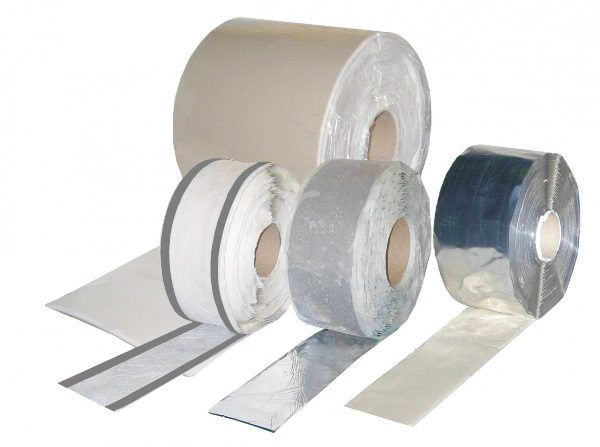
Protection of the polyurethane foam with a special tape prolongs the service life
How to extend the life of seals
The service life of plastic windows largely depends on the quality of the seals. The role of the sealing material in the manufacture of the window block is extremely important. Without it, all the positive qualities of metal-plastic windows simply fade away. After all, the protection of the room from dust, noise, wind and moisture is provided by the seal. For good sealing and tightness of closing windows, they are usually made of rubber.
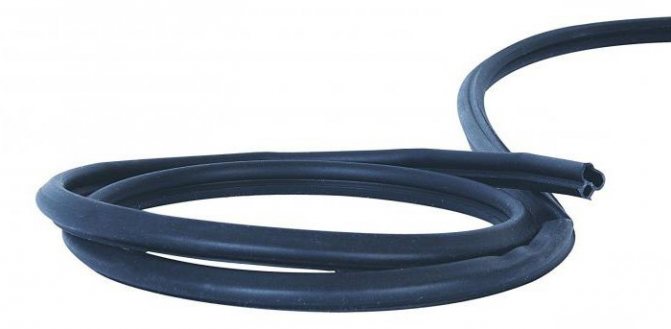

And she, as you know, under the influence of acid rains quickly deteriorates. In order for the sealing gum for plastic windows to have a longer service life, it is better to choose seals that have the color of natural rubber - black. In order to give it a gray or white tint, manufacturers add modifiers to the rubber, which significantly reduce the performance of the seal. There are few types of profile for this component - only up to four. But there are a huge number of fakes.
So that the service life of seals on plastic windows does not disappoint, you need to be very careful when choosing them to take only original sealing rubber bands. Also, to maintain elasticity, it is necessary to periodically coat them with a rubber lubricant, which should not contain either glycerin or silicone.
The main methods of protecting polyurethane foam
Under ultraviolet light, the foam sealant decomposes in the same way, regardless of the manufacturer. First, the foam darkens, then becomes brittle, then completely crumbles. Ultraviolet light destroys the structure of the foam in only a year, a maximum of a couple of years.
You can find out the service life of the polyurethane foam on the cylinder, it is different for each manufacturer.
Even if the foam lasts a maximum period of four years, it is still a short period. But the installation of ventilation, doors, windows is supposed to be carried out no earlier than in 10-15 years.
The video describes in detail the properties and characteristics of the foam sealant.
After completing the preparation of the top layer, they proceed to the choice of the technique and the execution of the treatment:
- Puttying. To do this, apply a finishing frost-resistant plaster mixture, liquid plastic, ordinary window putty, but with an admixture of liquid glass. Any of the listed compositions is applied with a spatula from bottom to top;
- Mounting tape.The device of the protective layer in this way is the simplest and least expensive method, but the aesthetics of the final result is a big question. It is quite difficult to pick up the tape to match the window or door frame, and it is also not possible to paint over from above, because it will simply peel off;
- Paints and varnishes. The best method is to coat with an acrylate paint compound. It provides good adhesion to the foam sealant. This durable device, and accordingly the service life of the foam, will ensure the combination of puttying and acrylate painting.
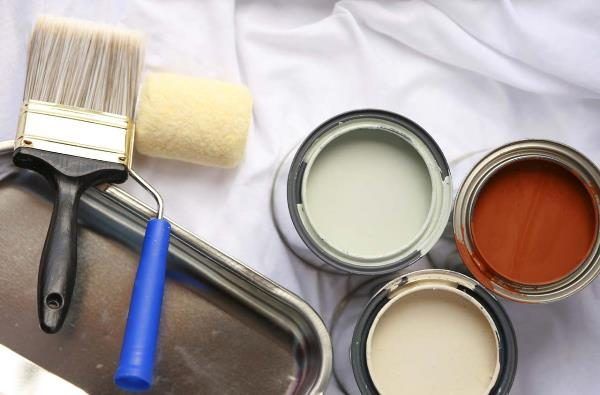

It will be possible to protect the polyurethane foam by painting
The less often you open it, the longer it will last!
How long a metal-plastic window will last, how long it will open and close, depends, first of all, on the quality of the fittings. And its service life is measured in the number of cycles. But even knowing this figure, it is problematic to answer the question of how long the window will last. Why? After all, some owners will open and close the window 30 times a day, while others - only 2. For example, if the number of cycles is 15,000, and the windows will be opened 20 times a day, then they will cease to operate with such fittings after 3 years!
Therefore, it is very inconvenient to measure the service life of plastic windows in cycles. And it is not necessary. You just need to be ready to replace the hardware as the need arises, because it is the most vulnerable part of a plastic window: it is the elements of the hardware, providing the functionality of the windows, that take on significant operational loads.
How much polyurethane foam can be stored in a cylinder?
Polymerization begins literally immediately after the manufacture of the material. Over time, this leads to an increase in viscosity right in the middle of the container.
The polymerization process occurs uniformly for the first months, and then begins to accelerate. Storage conditions affect the speed of the process either negatively or positively. The storage period is most often indicated on the cylinder from the date of manufacture. But a quality product does not lose its properties even after the expiration date. This is due to the use of high quality raw materials and the development of good formulas.
When installing windows or doors, other structures that need insulation, a sealing mixture is used - mounting fire-fighting foam. It is able to create a strong fire barrier, as it does not burn, but is charred.
Terms of use
- Since it is not easy to remove foam from the skin, you should first equip yourself with work gloves.
- In order for the composition to mix, shake it thoroughly for 30-60 seconds. Otherwise, a resinous composition will come from the cylinder.
- For quick adhesion, the workpiece is moistened. Then you can go directly to the foam application. The container must be held upside down to displace the polyurethane foam from the container. If this is not done, the gas will be squeezed out without foam.
- Foaming is carried out in slots whose width is no more than 5 cm, and if more, then use polystrile. It saves foam and prevents expansion, which most often leads to structural failure.
- Foam from bottom to top with even movements, filling a third of the gap, because the foam hardens with expansion and fills it. When working at low temperatures, you can only work with foam heated in warm water up to + 40 ° C.
- For quick adhesion, it is necessary to spray the surface with water. Spraying at negative temperatures is prohibited, as it is impossible to obtain the desired effect.
- In case of accidental contact with mounting foam on doors, windows, floors, it is necessary to remove it with a solvent and a rag, and then wash the surface. Otherwise, the composition will harden and it will be very difficult to remove it without damaging the surface.
- 30 minutes after using the installation compound, you can cut off the excess and plaster the surface. For this, it is very convenient to use a hacksaw or a knife for construction needs. The foam begins to fully set after 8 hours.
- The sealant can irritate the skin, eyes and respiratory tract. Therefore, it is recommended that the worker wear protective goggles, gloves and a respirator when there is poor ventilation. Once hardened, the foam is not harmful to human health.
- In order to avoid the purchase of fakes, you should use some recommendations: ask the store for a product certificate; examine the quality of the label. Since they try to produce fakes with minimal costs, the printing industry does not attach much importance. Defects of the label are visible on such cylinders with the naked eye: displacement of paints, inscriptions, other storage conditions; date of manufacture. Expired material loses all its basic qualities.
Fire-resistant polyurethane foam: characteristics
Due to the unique components that make up the composition, it has specific properties:
- Tolerance to moisture and the formation of fungal colonies;
- Tolerates sudden temperature jumps from - 60 ° С to + 100 ° С;
- High degree of strength and resistance, unlike conventional sealants;
- Slowly igniting - the ignition time is indicated on the packaging;
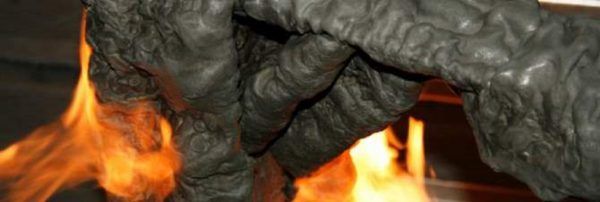

Foam behavior during a fire
- Under the influence of fire, it does not melt, but goes out, eliminating the source of fire;
- High threshold of adhesion to other materials, which increases the scope of application.
Do not forget about the disadvantages, which, with all the advantages, are insignificant. Fire resistant foam is destroyed by ultraviolet rays. Therefore, it is required to close the treated area from direct sunlight.
Depending on the main function and area of use, fire protection foam is divided into several classes:
- In terms of resistance to temperature changes, winter and summer insulating compounds are distinguished. In the first case, the sealant is used at low temperatures, and in the second - at high temperatures.
- According to the number of elements in the composition, the sealant is divided into one-component and two-component. At the same time, polyurethane foam with one active element solidifies under the influence of external factors - water. And the two-component sealant is activated by chemical components.
- According to the coefficient of fire resistance, fire-fighting foam is marked from B1 (for buildings with a large capacity of people) to EI, which in turn is subdivided into No. 30, 60, 90, 120 and 150. The last figures indicate the degree of fire resistance. The higher they are, the greater the fire resistance coefficient.
The material also has disadvantages:
- The main disadvantage of the MP is its instability to ultraviolet radiation - when exposed to it, the polymer begins to collapse, for this reason the treated seams must be protected from light by using puttying or painting.
- Cylinders should be stored in a cool room, because when exposed to high temperatures, the pressure in them rises, which can lead to an explosion of the cartridge and damage to all nearby materials.
- Once on the skin, the foam is very difficult to remove. It can only be washed off with a special solvent. Therefore, you need to work with gloves. If the foam is still frozen on the skin, then you will have to steam this place, and then clean it off with a pumice stone.
All foam offered at points of sale is divided according to several criteria. According to the method of use, it can be semi-professional and professional.
Semi-professional is applied without any additional devices. For its application, a plastic tube with a lever attached to the cylinder is used, which is put on the cylinder valve.Professional foam requires the use of a special gun, which allows dosing of the supplied stream, and is also convenient for working in hard-to-reach places.
According to the temperature of use, foam is divided into three types:
- summer. The container with summer foam indicates that the surface temperature of the structure to be treated can be from +5 to +35 degrees. But at the same time, the hardened foam has a temperature resistance of -50 to +90 degrees. That is, the limitation applies only directly to the moment of applying the material;
- winter. Winter foam is used when working in the winter. The temperature range that allows the use of this foam is from -10 (-18) to +35 degrees. When using winter foam, it must be borne in mind that its volume after leaving the cylinder is highly dependent on the ambient temperature - the lower its temperature, the lower the foam yield. Thus, the consumption of foam can be increased;
- all-season. All season foam combines the properties of the previous two materials. It has a special formula that allows you to obtain a large volume of foam, even at low temperatures. In this case, the material quickly polymerizes even in the cold. While this is still a fairly new material, which is not produced by all MP manufacturers.
Fire-resistant polyurethane foam: scope
Fire-resistant foam, due to the components that make up its composition, has a much wider area of use than that of a conventional sealant.
It is applied:
- When insulating door and window openings, voids and ceilings in walls and ceilings, as well as in order to increase their degree of resistance to fire and smoke permeability;
- When sealing near chimney slots;
- For filling cracks, seams, various gaps;
- When installing air conditioners or other cooling systems to improve their thermal insulation;
- For the purpose of creating layers that would absorb noise.
Also, fire-fighting foam, according to GOST, is actively used in the installation of sewer plastic pipes, electrical networks. It fixes the cable in the groove and creates a protective layer.
It should be noted that at trading floors, warehouses or in buildings with difficult evacuation conditions, a sealant of at least level B1 is used.
Fire-resistant polyurethane foam is capable of filling even large cracks up to 100 mm. During its application, the following fire safety rules are adhered to:
- The comfortable temperature of the plane where the foam is to be applied does not exceed 35 degrees above zero, and the balloon itself - from + 10 ° C to + 30 ° C. To make the sealant warm, it is left in the room for a day, but in no case is heated ...
- For better adhesion, the surface to be treated is moistened, while being careful not to form drops.
- Cracks, openings or cavities are filled only by a third, because the polyurethane foam grows in its volume.
- After hardening, the sealant is shielded from the sun with plaster or additional structures.
Fireproof polyurethane foam: how not to be mistaken with the choice
Fire fighting foam differs from its counterparts in the color of the mixture.
If the usual sealant has a yellowish or light brown tint, then it is fire-resistant - as a result, it gets a red tone.
The next feature is the marking on the package, which speaks of the fire resistance coefficient.
Also, when buying, pay attention to the following points:
- The country of origin is a company with positive reviews in this area.
- The weight of the cylinder - the manufacturer, in order to form a competitive price, saves on the volume of production.
- The name of the sealant is unscrupulous manufacturers who copy well-known brands, changing one or more letters in them.
- Fire resistance coefficient - how long fire-resistant polyurethane foam is able to withstand exposure to open fire.
Fire-fighting polyurethane foam on the building materials market is represented by various manufacturers, such as PROFFLEX, NULLifire, Ogneza, etc.
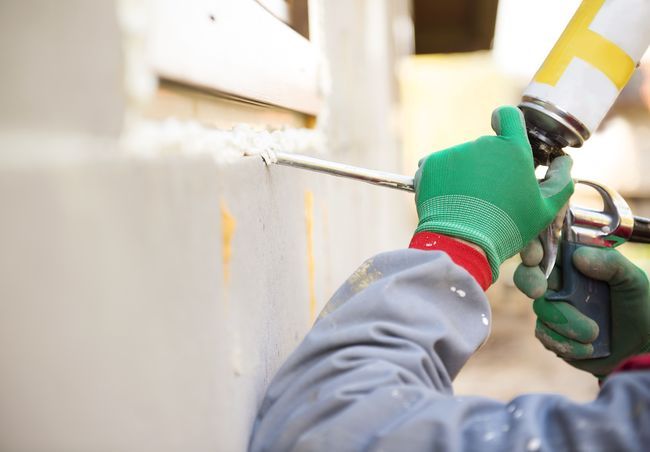

How to choose the right fittings
Different fittings are placed on the same profile, and the service life of metal-plastic windows, how many times they can open and close, largely depends on which one the buyer chooses.
It is better to give preference to the fittings that are covered with a polymer film. You need to buy fittings from well-known manufacturers such as Maco, GU, Roto. Each of these brands has advantages.
Experts recommend going to the manufacturers' websites, familiarizing yourself with the production technologies of this window component and telling the installer which brand of fittings you prefer to supply. It is also important to set up the hardware so that the window opens and closes gently. And you also need to regularly treat it with universal lubricants (lithol or automotive WD-40).
NULLifire polyurethane fire-fighting foam is a reliable assistant when sealing a building
Trusted manufacturer of flame retardant sealant - NULLifire.
The foam will perfectly fill cracks, openings and insulate the building. The components of the composition are activated due to the fact that they absorb moisture. NULLifire polyurethane foam works well with any surface - metal, wood, concrete, brick and others.
Exceptional advantages lie in the fact that the foam with a high degree of adhesion, the fire resistance coefficient is equal to B1, resists fire for 4 hours. It is certified according to the latest European Union standards.
Polyurethane foam with increased fire resistance is used in works requiring fire insulation. Foam is a one-component polyurethane foam based sealant. No preparation required - this is a completely ready-to-use material.
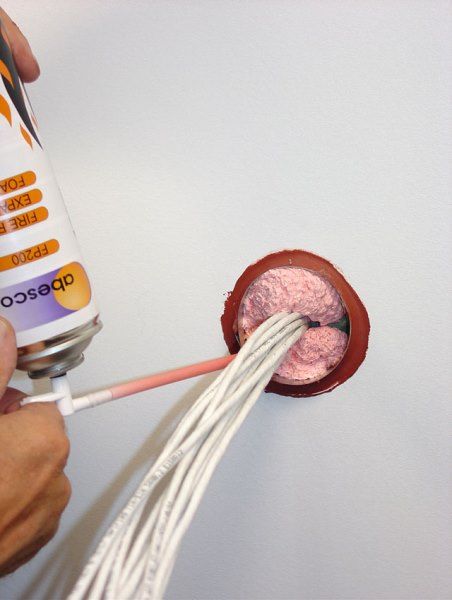

The foam polymerizes on contact with a humid environment. Thanks to the addition of special substances, it provides excellent acoustic and thermal effect. This insulating layer prevents fumes and various gases from entering the room.
Manufacturers
The construction market is rich in a variety of sealants, but this does not mean that all of them meet the quality requirements. Often, stores receive foams that have not been certified and do not meet the necessary requirements. Some manufacturers do not completely pour the composition into a container, or instead of gas use volatile components that harm the atmosphere.
Today, installation work using foam can be performed both in summer and winter. For this purpose, special mixtures are produced in the already familiar aerosol cans. They show all their qualities at sub-zero temperatures.
That is, frost-resistant polyurethane foam expands and polymerizes as well as summer foam.
"Winter" sealant is an easy-to-use material. But it is worth knowing certain rules when using it in winter. The same packaging under different conditions gives a different yield of polyurethane foam. And this difference can affect the cost of work and the final result.
Where is the foam used?
Fire resistant foam is used in the installation of fireproof windows and doors, assembly hatches. Often, professional foam is used to treat fireplaces and stoves, insulate rooms with high temperatures, to reduce the fire hazard in saunas and baths.
Foam Application Areas:
- cracks and formations that are filled during installation or in construction;
- places in need of heat or sound insulation;
- filling gaps formed as a result of laying floor slabs;
- when constructing a chimney, heating pipes, to close holes.
Polyurethane foam from different manufacturers differs in terms of economy of use.It hardens quickly and fills empty spaces perfectly. Professional foam does not burn, which confirms the quality and safety of use in a room with unstable temperature conditions.
The level of quality and fire resistance is determined by the classes. Foam production is controlled by government standards. In the hardened state, the mineral material has the density of concrete and belongs to class B1.
Features of the
Polyurethane foam is sold in cylinders with a propellant and prepolymer. Air humidity allows the composition to harden with a polymerization effect (formation of polyurethane foam). The quality and speed of acquiring the required hardness depends on the level of moisture.
Since the humidity level is lower in the cold season, the polyurethane foam hardens longer. To use this material at subzero temperatures, special components are added to the composition.
For this reason, there are several types of polyurethane foams.
- Summer high-temperature foam is used at temperatures from +5 to + 35 ° C. It can withstand temperature stresses from -50 to + 90 ° C.
- Off-season species are used at temperatures not lower than -10 ° C. Even in sub-zero weather, sufficient volume is obtained. The composition can be applied without preheating.
- Winter low-temperature types of sealants are used in winter at air temperatures from -18 to + 35 ° C.
Scope of use and features of class B1 polyurethane foam at home
Such material is used:
- when installing windows and window systems (if it is necessary to use controlled polyurethane foam);
- when installing roller shutters (used to fill butt slots);
- for covering the front door;
- for filling holes and voids in surfaces.
Professional foam is required to pass tests for fire resistance and fire resistance after filling cracks in the floor and walls. Fresh material adheres easily to most surfaces. Exceptions are oily surfaces, polyethylene, silicone and other similar materials.
Polyurethane foam is used at any ambient temperature, up to 30 degrees Celsius. After hardening, it acquires a special hardness and becomes a covering material. In the hardened state, it is able to keep the structure unchanged at temperatures from -40 to +100 degrees. Does not age if it does not come into contact with the sun's rays.
This material shows excellent sound insulation parameters. Manufacturers equip cylinders with special connections that allow them to be used using any gun.
A material with non-combustible properties is considered relatively innovative in the mortar markets. It does not roll down when applied to vertical holes and fills perfectly in any holes.
The fire retardant material is more resistant to moisture and mildew than conventional material. It is used to hinder the ignition in the event of a fire (on each cylinder there is a marking indicating the time for which the combustion is delayed). Foam of class B1 is considered the most resistant, it is hardly flammable, in an open fire it does not melt and does not flow with hot drops, when extinguishing the main fire, such a seal extinguishes itself after a while. Foam marked B3 has a lower fire resistance.
Release form
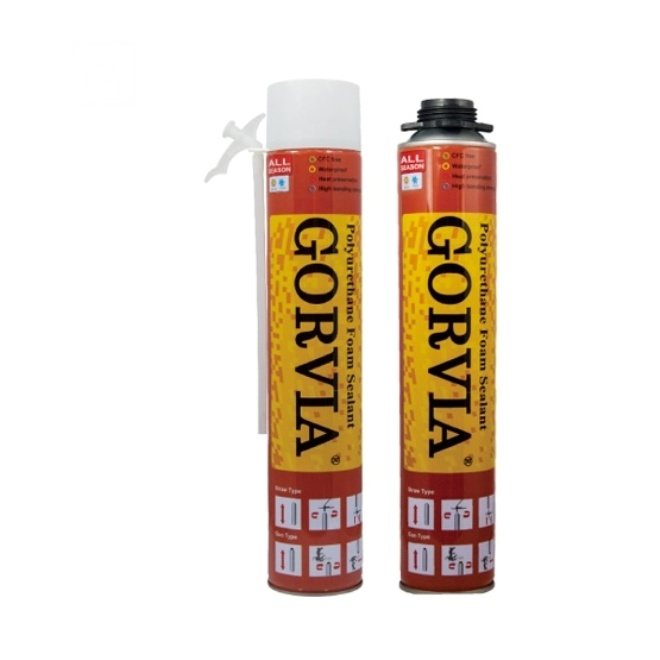

Manufacturers produce polyurethane foam in different forms and types. The choice will depend on the intended use and operating conditions of the sealant.
It is customary to distinguish:
- Professional polyurethane foam, which is made in special large cylinders that must be inserted into the gun to spray the substance. An economical consumption of sealant is ensured with the pistol. Used by builders when carrying out a large amount of work.
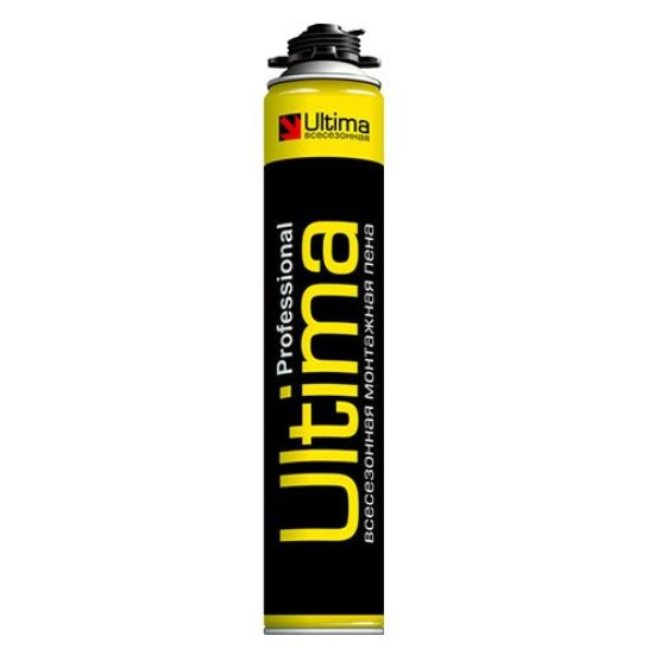

- Household polyurethane foam, which is produced with a tube (with its help, cracks, joints, gaps are usually foamed).Designed for domestic use for minor repairs and gluing surfaces.
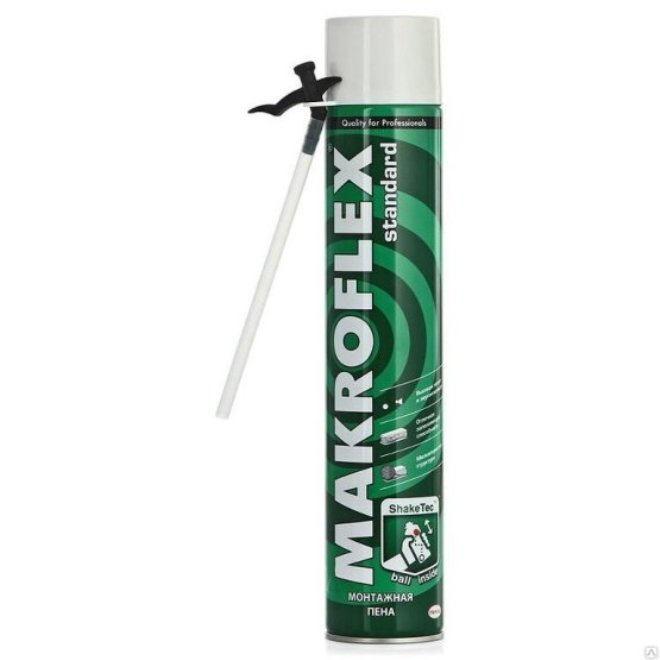

Also, the recommended temperature regime for the use of the sealant is indicated on the can with polyurethane foam. Distinguish between summer, winter and universal (all-season) polyurethane foam. When buying, it is recommended to pay attention to the flammability class of the material (B1 - fire-resistant materials, B2 - self-extinguishing materials, B3 - combustible materials).
What kind of polyurethane foam to buy
When purchasing fire-resistant material, choose trusted manufacturers of this product. If you use new items, be sure to check the quality certificates.
When choosing a foamy substance, consider the following nuances:
- the cost of the foam directly depends on the weight of the aerosol. Therefore, looking at the cost, one can draw conclusions about the quantity. Conduct an experiment and compare cylinders of different costs, their weight in your hands will differ;
- take only well-known brands. At the same time, carefully read the names so as not to purchase a cheap copy at the cost of an expensive composition;
- The indicator of quality is the number of minutes that the foam resists fire. For the most hazardous surfaces and rooms, only foams with an increased level of fire resistance are used. To seal and isolate hot water communications, class B2 will be sufficient. B1 is used in rooms that may be exposed to open flames.
Before using such a substance, the work surface must be cleaned of dust and debris. Then it is impregnated with water, preliminary priming is allowed if necessary. The preparatory stage is applied to the entire surface before applying the foam.
The characteristics of the polyurethane foam and combustion tests are shown in the video:
The correct temperature for work is +20. If the cylinder has a temperature below 5 degrees, it is heated in warm water, but the temperature should not rise above 50 degrees, otherwise there is a risk of explosion.
Temperature Range
A very important indicator when choosing a polyurethane foam, especially if construction work is supposed to be carried out in the winter season. However, in any case, the consumer should understand that even when using specialized winter foam, the storage temperature of the cylinders should be at least + 20 C.
and overcooling of the material can lead to a decrease in performance. In this case, you can warm up the foam by putting the cylinders in warm water, or by placing them near a heated heating radiator.
How to use polyurethane foam
There is a large selection of manufacturers of such substances. They constantly improve the properties of their product to withstand short-lived fire without changing the structure.
It is impossible to work with overheated cylinders right away; first, they are cooled in cold water. From time to time, the foam is shaken up to 20 times.
Be sure to take precautions to avoid injury and material damage. Fire resistant foam has a distinctive pink or red color.
